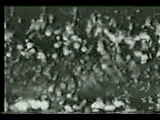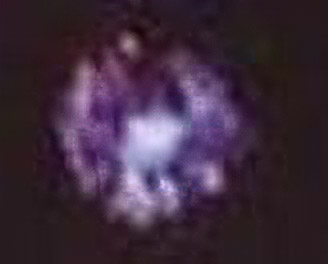1-31-1 Yokoyamadai,
Chuo-ku, Sagamihara City,
Kanagawa pref. 2520241
- Cotnact
- +81-42-7117721
Fundamentals of Ultrasonic Cleaning Technology2004#3
True ultrasonic cleaning technology The truth about cavities (microvacuum nuclei groups).
- Understand the nature of the globular nebula cavity and learn how to apply it correctly.
Third generation ultrasonic cleaning technology [Basic idea].
Before seeking specific new technologies for different applications, I would like to talk about ultrasonic cleaning, which is the backbone of new technologies.
The principle is important and the applications are unlimited, depending on the object.
This is the basic technology that was first discovered and put to practical use by the author in the world during the CFC era, and has been refined with the aim of eliminating CFC.(This cleaning technology does not provide the required performance unless the cavitation control is accurate, and in some cases this may lead to the destruction of the ultrasonic transducer and a significant reduction in cleaning power.However, without this technology, innovation in cleaning technology in China (and unfortunately also in Japan) in the new era would be impossible.
This is called the third generation of cleaning technology Cavitation Enhancement System.
-
Cavitation enhancement system.
On the basis of an ultrasonic tank that precisely controls cavitation, ultrasonic cleaning equipment that controls the dissolved amount of air in the liquid to suit the purpose is called ultrasonic cleaning equipment with a cavitation enhancement system (third-generation ultrasonic cleaning equipment).The air content (hereafter substituted by dissolved oxygen content due to the measurement technique) is controlled by the ultrasonic cleaning system with a cavitation enhancement system.Without the control of the dissolved oxygen content, the future ultrasonic cleaning technology is inconceivable.When dissolved oxygen is more than a few ppm, i.e. in general water and water-based ultrasonic cleaning, gas nebula cavities are generated.Gas nebula cavities have a slow speed of movement of the liquid when the cavities are generated and dissipated, resulting in an extremely weak impact force.In addition, the cavities themselves travel a short distance (within a few millimetres), resulting in severe cleaning irregularities.This is better than ultrasonic cleaning systems that generate visible bubbles, but is not suitable for future ultrasonic cleaning systems that compete for precision.Therefore, for future ultrasonic cleaning, spherical nebula-shaped cavities are used.Ultrasonic cleaning that uses these spherical nebula cavities in a stable and efficient manner by controlling the amount of dissolved oxygen in the liquid is called third-generation ultrasonic cleaning or cavity enhancement systems.
-
Globular nebula-shaped cavities.
Cavities in ultrasonic cleaning do not occur on a surface.They occur at points.There is a distance between the cavities and several do not occur attached to each other.In general degrease cleaning, but not in so-called precision cleaning, the space between cavities is the cause of defects.Therefore, efforts are made to increase cavity density in various ways.Or, efforts are made to increase the distance travelled by the cavities.A series of detailed efforts are made to improve the ultrasonic waveform, oscillation efficiency, liquid input efficiency, output per unit area, the method of attaching the vibrating elements, reducing the amount of wasted liquid, etc.The latest idea of ultra-compact, high-speed, high-density ultrasonic cleaning is an extension of this concept.
-
Cavitation impact force control.
In ultrasonic cleaning in the 20 KHz – 10 MHz range, the use of spherical cavities with low dissolved oxygen control is an absolute prerequisite for achieving efficient precision cleaning.Spherical cavities have a high suction and discharge rate of liquid per unit of time and the cavities themselves move at high speeds.Therefore, the cleaning power shows the maximum value under the same conditions and the diffusion effect (dirt transport effect by the cavities) is also the highest.Air entering from the liquid surface, gases contained in the liquid itself and air on the surface of the cleaning object itself should be removed from the ultrasonic cleaning area and the air content of the liquid around the cleaning object and between the cleaning object and the vibrating plate should be kept stable at less than 2 ppm oxygen.This is exactly the same if the ultrasonic irradiation utilises a cavity, whatever the medium and whatever the flow path.How much oxygen (air) content is appropriate depends on the frequency of the ultrasound, the type and temperature of the liquid and, above all, the precision of the cleaning objective.To use this technology stably and to utilise the energy of ultrasound efficiently, it is not enough to simply degas the liquid, but it is necessary to strictly observe the aforementioned cavitation control.In Japan, many challenges have been made since the presentation of this technology by the author, and as a result, it must be considered that a similar product cannot be produced yet, because of the lack of technology to comply with the cavitation control.The following is a list of the main fields of application of this spherical cavity technology.I would like to learn more about copy-protection technology.I would like to learn anti-copying technology.
[Video, and Photo 5] Cavitation distribution in the third generation.


Globular nebula cavity
All rights reserved.